 In an earlier guest blog, Bradley L. Garrett revealed his excitement upon discovering a pavement penis. Well, there’s a lot of them about.  These examples are in the inner Sydney suburb of Redfern, where encroaching trendiness has turned a closed-off street beside the railway line into an official bicycle route and a parking lot for cultural-industry workers and the newer type of resident.
In an earlier guest blog, Bradley L. Garrett revealed his excitement upon discovering a pavement penis. Well, there’s a lot of them about.  These examples are in the inner Sydney suburb of Redfern, where encroaching trendiness has turned a closed-off street beside the railway line into an official bicycle route and a parking lot for cultural-industry workers and the newer type of resident.
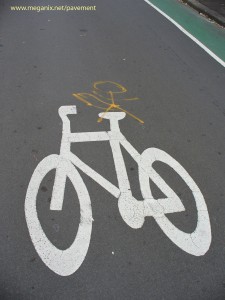 Older established residents and their offspring may well feel resentful. I choose to believe that these alterations of official traffic signs express a local belief that the car parkers and cyclists are wankers.
Older established residents and their offspring may well feel resentful. I choose to believe that these alterations of official traffic signs express a local belief that the car parkers and cyclists are wankers.
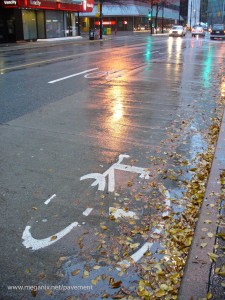
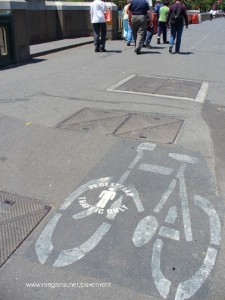 There is an ongoing battle between cyclists and just about everyone else – motorists don’t want them on the roads, pedestrians (like me) don’t want them on the footpaths. The issue is a perennial filler for Sydney newspapers and has flared again this week in news stories, opinion pieces and letters to the editor.
There is an ongoing battle between cyclists and just about everyone else – motorists don’t want them on the roads, pedestrians (like me) don’t want them on the footpaths. The issue is a perennial filler for Sydney newspapers and has flared again this week in news stories, opinion pieces and letters to the editor.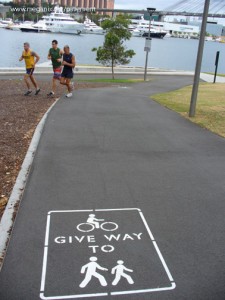 Almost every sign, symbol, graphic and graffiti marked on the roads and sidewalks is a claim for territory. The two examples photographed for today’s blog record instances where pedestrians have had a victory over cyclists, officially at least, and probably only temporarily. The ineptly obliterated bicycle symbol overpainted with a ‘Pedestrian traffic only’ stencil was on the bridge at the corner of St Kilda Road and Flinders Street in Melbourne in 2005. The ‘Give way’ stencils appeared in parks in the City of Sydney towards the end of 2008 after many complaints from pedestrian park-users.
Almost every sign, symbol, graphic and graffiti marked on the roads and sidewalks is a claim for territory. The two examples photographed for today’s blog record instances where pedestrians have had a victory over cyclists, officially at least, and probably only temporarily. The ineptly obliterated bicycle symbol overpainted with a ‘Pedestrian traffic only’ stencil was on the bridge at the corner of St Kilda Road and Flinders Street in Melbourne in 2005. The ‘Give way’ stencils appeared in parks in the City of Sydney towards the end of 2008 after many complaints from pedestrian park-users.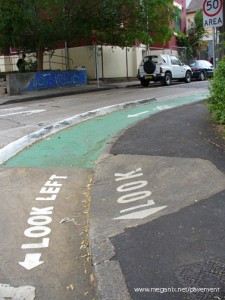

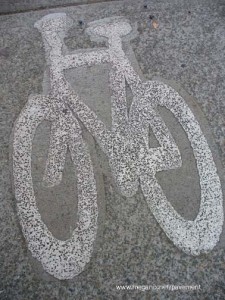 I love the pitted texture of this old bicycle symbol. It’s on a shared footpath (footpath?) near Erskineville Station. In the foreground of the wider shot there is a tag – or maybe it’s just a spill.
I love the pitted texture of this old bicycle symbol. It’s on a shared footpath (footpath?) near Erskineville Station. In the foreground of the wider shot there is a tag – or maybe it’s just a spill.